plan puts grizzlies under the Gun!
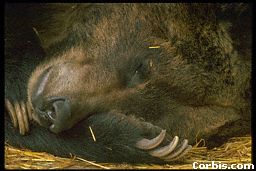 As the Great Bear snoozes, blanketed by snow in the heart of the
Northern Rockies, the debate
over its future continues to burn. The battle over grizzly protection
has just flared up again
with the March 1st release of the draft Conservation Strategy for the
Grizzly Bear in the
Yellowstone Area (CS).
This document represents one of the last pieces of the puzzle that has
to be in place before the
Fish and Wildlife Service (FWS) can remove Endangered Species Act
protections for the Yellowstone
grizzly bear (delisting). The CS also sets standards for bear and
habitat protection in a
post-delisting world. Since the Great Bear is an ecological barometer
for the health of the
ecosystems of the West, grizzly delisting is an important issue for
other wildlife too, casting a
long shadow over the future of other species such as elk, native trout,
bighorn sheep and wolves.
>
As the Great Bear snoozes, blanketed by snow in the heart of the
Northern Rockies, the debate
over its future continues to burn. The battle over grizzly protection
has just flared up again
with the March 1st release of the draft Conservation Strategy for the
Grizzly Bear in the
Yellowstone Area (CS).
This document represents one of the last pieces of the puzzle that has
to be in place before the
Fish and Wildlife Service (FWS) can remove Endangered Species Act
protections for the Yellowstone
grizzly bear (delisting). The CS also sets standards for bear and
habitat protection in a
post-delisting world. Since the Great Bear is an ecological barometer
for the health of the
ecosystems of the West, grizzly delisting is an important issue for
other wildlife too, casting a
long shadow over the future of other species such as elk, native trout,
bighorn sheep and wolves.
>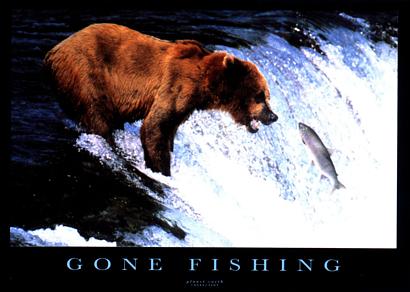 The good news is that Americans care deeply about protecting the grizzly
bear as evidenced in
FWS's recent public comment period on habitat protection, the Draft
Habitat-Based Recovery
Criteria for the Yellowstone Ecosystem. More than 95% of nearly 17,000
respondents said they
want better protection for the bear and its habitat, including wildlife
supporters in all 50
states and a few foreign countries. Thanks to these comments,
conservationists appear to have
successfully pushed back the timeline on when the bear will be
delisted. However, political
pressure to delist continues and that timeline could change quickly.
Federal agencies and states have pursued premature delisting of the
Yellowstone grizzly as a way
to use the Great Bear to demonstrate "success" under the Endangered
Species Act (ESA). Still,
grizzly experts are worried about the implications of escalating private
land development in bear
habitat and uncertainty about the key food sources such as white bark
pine, imperiled by an
introduced disease, and Yellowstone cutthroat trout, which is threatened
by whirling disease and
introduced Lake trout in Yellowstone Lake.
The good news is that Americans care deeply about protecting the grizzly
bear as evidenced in
FWS's recent public comment period on habitat protection, the Draft
Habitat-Based Recovery
Criteria for the Yellowstone Ecosystem. More than 95% of nearly 17,000
respondents said they
want better protection for the bear and its habitat, including wildlife
supporters in all 50
states and a few foreign countries. Thanks to these comments,
conservationists appear to have
successfully pushed back the timeline on when the bear will be
delisted. However, political
pressure to delist continues and that timeline could change quickly.
Federal agencies and states have pursued premature delisting of the
Yellowstone grizzly as a way
to use the Great Bear to demonstrate "success" under the Endangered
Species Act (ESA). Still,
grizzly experts are worried about the implications of escalating private
land development in bear
habitat and uncertainty about the key food sources such as white bark
pine, imperiled by an
introduced disease, and Yellowstone cutthroat trout, which is threatened
by whirling disease and
introduced Lake trout in Yellowstone Lake.
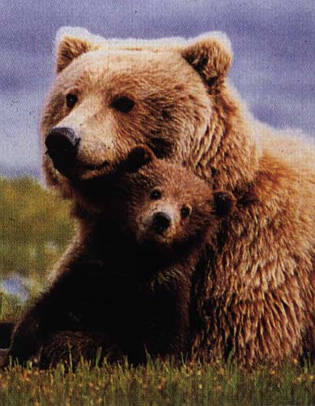 Pressure by some
elected officials is fierce to delist the grizzly and
facilitate exploitation of
public wildlands. It is critical that the CS truly protect bears and key
bear habitat into the
future. Your voice for the bear, and the wildland ecosystems it
represents, is desperately needed
please express your concerns at a public meeting (listed below) or
submit written comments by
May 30, 2000.
PLEASE ATTEND A PUBLIC MEETING!
The FWS recently scheduled open house meetings in your area. These
sessions will be held to
provide information, answer questions and gather comments on the newly
released Conservation
Strategy. In order to keep the pressure on the agency to increase
safeguards for the bear we will
need to have a strong pro-bear presence at these meetings!
Pressure by some
elected officials is fierce to delist the grizzly and
facilitate exploitation of
public wildlands. It is critical that the CS truly protect bears and key
bear habitat into the
future. Your voice for the bear, and the wildland ecosystems it
represents, is desperately needed
please express your concerns at a public meeting (listed below) or
submit written comments by
May 30, 2000.
PLEASE ATTEND A PUBLIC MEETING!
The FWS recently scheduled open house meetings in your area. These
sessions will be held to
provide information, answer questions and gather comments on the newly
released Conservation
Strategy. In order to keep the pressure on the agency to increase
safeguards for the bear we will
need to have a strong pro-bear presence at these meetings!
 * March 21 from 4:00 - 9:00 p.m. in Cody, Wyoming, at the Holiday Inn;
* March 23 from 4:00 - 9:00 p.m. in Jackson Hole, Wyoming, at the Ranch
Inn;
* March 28 from 5:00 - 8:00 p.m. in Bozeman, Montana, Location T.B.A.
* April 6 from 7:00-9:00 p.m. in Idaho Falls, Idaho, at the Inn at
Cavanaugh's
Public comments on the Conservation Strategy should be received by the
Grizzly Bear Recovery
Coordinator, U.S. Fish and Wildlife Service, University Hall, Room 309,
University of Montana,
Missoula, Montana 59812 or electronically mailed to [email protected]
by May 30, 2000.
* March 21 from 4:00 - 9:00 p.m. in Cody, Wyoming, at the Holiday Inn;
* March 23 from 4:00 - 9:00 p.m. in Jackson Hole, Wyoming, at the Ranch
Inn;
* March 28 from 5:00 - 8:00 p.m. in Bozeman, Montana, Location T.B.A.
* April 6 from 7:00-9:00 p.m. in Idaho Falls, Idaho, at the Inn at
Cavanaugh's
Public comments on the Conservation Strategy should be received by the
Grizzly Bear Recovery
Coordinator, U.S. Fish and Wildlife Service, University Hall, Room 309,
University of Montana,
Missoula, Montana 59812 or electronically mailed to [email protected]
by May 30, 2000.
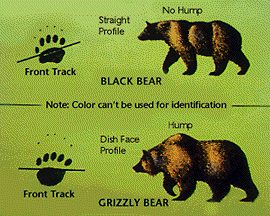 If you can't attend a meeting, then please take a minute today to write
the agency. Tell the
Fish and Wildlife Service that the Conservation Strategy falls short of
protecting grizzly bear
habitat for the long-term. Ask the agency to:
* Protect sufficient habitat. The Recovery Area boundaries must be
changed to include areas
currently used by bears as well as areas vitally important for food and
habitat. Boundaries must
be based on the needs of bears, not a desire to open more lands to
industrial development.
If you can't attend a meeting, then please take a minute today to write
the agency. Tell the
Fish and Wildlife Service that the Conservation Strategy falls short of
protecting grizzly bear
habitat for the long-term. Ask the agency to:
* Protect sufficient habitat. The Recovery Area boundaries must be
changed to include areas
currently used by bears as well as areas vitally important for food and
habitat. Boundaries must
be based on the needs of bears, not a desire to open more lands to
industrial development.
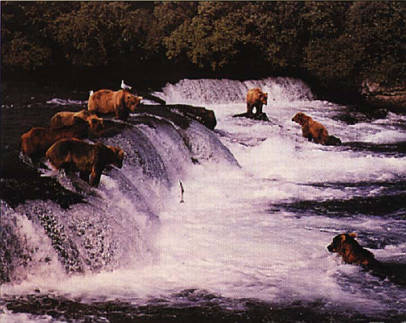 * Strike the plan's loopholes that allow for destruction of thousands of
acres of bear habitat
within the recovery zone. One such loophole in the current document
allows for a one percent
loss of much of the remaining bear habitat.
* Protect lifelines. Wildlife corridors between Yellowstone and Canada
are vital to the
>long-term survival of grizzlies in the lower-48 states. Unfortunately,
the government's plan
proposes only to "study" these linkages but provides no guaranteed
protection, even on an interim
basis. The plan should call for action, not more study.
* Restore degraded habitat. The current plan identifies important
grizzly bear areas where
habitat is degraded below acceptable levels. However, it does not set
any goals or timelines that
agencies must meet to restore this degraded habitat-it only states these
areas need
"improvement." The Fish and Wildlife Service should require that these
problem areas be brought
up to standards that will sustain bears.
* Strike the plan's loopholes that allow for destruction of thousands of
acres of bear habitat
within the recovery zone. One such loophole in the current document
allows for a one percent
loss of much of the remaining bear habitat.
* Protect lifelines. Wildlife corridors between Yellowstone and Canada
are vital to the
>long-term survival of grizzlies in the lower-48 states. Unfortunately,
the government's plan
proposes only to "study" these linkages but provides no guaranteed
protection, even on an interim
basis. The plan should call for action, not more study.
* Restore degraded habitat. The current plan identifies important
grizzly bear areas where
habitat is degraded below acceptable levels. However, it does not set
any goals or timelines that
agencies must meet to restore this degraded habitat-it only states these
areas need
"improvement." The Fish and Wildlife Service should require that these
problem areas be brought
up to standards that will sustain bears.
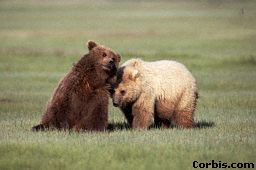 * Provide real standards for motorized access in grizzly habitat.
Governmental standards are
based on an arbitrary acceptance of 1998 road levels, not on the
demonstrated needs of grizzlies
and other wildlife.
To receive a copy of the draft Conservation Strategy for the Yellowstone
grizzly bear, contact
Laird Robinson of the Forest Service in Missoula at 406-329-3434. The
draft Conservation Strategy
is also available via the Internet at
http://www.r6.fws.gov/endspp/grizzly/.
David J. Ellenberger
Media and Outreach Coordinator
Sierra Club Grizzly Bear Ecosystems Project
234 E. Mendenhall
Bozeman, MT 59715
(406) 582-8365
(406) 582-9417 fax
http://www.sierraclub.org/wilderness/grizzly
"Protecting wild grizzlies in the lower-48, for our families, for our
future."
* Provide real standards for motorized access in grizzly habitat.
Governmental standards are
based on an arbitrary acceptance of 1998 road levels, not on the
demonstrated needs of grizzlies
and other wildlife.
To receive a copy of the draft Conservation Strategy for the Yellowstone
grizzly bear, contact
Laird Robinson of the Forest Service in Missoula at 406-329-3434. The
draft Conservation Strategy
is also available via the Internet at
http://www.r6.fws.gov/endspp/grizzly/.
David J. Ellenberger
Media and Outreach Coordinator
Sierra Club Grizzly Bear Ecosystems Project
234 E. Mendenhall
Bozeman, MT 59715
(406) 582-8365
(406) 582-9417 fax
http://www.sierraclub.org/wilderness/grizzly
"Protecting wild grizzlies in the lower-48, for our families, for our
future."
 BACK TO HOME PAGE
BACK TO HOME PAGE As the Great Bear snoozes, blanketed by snow in the heart of the
Northern Rockies, the debate
over its future continues to burn. The battle over grizzly protection
has just flared up again
with the March 1st release of the draft Conservation Strategy for the
Grizzly Bear in the
Yellowstone Area (CS).
This document represents one of the last pieces of the puzzle that has
to be in place before the
Fish and Wildlife Service (FWS) can remove Endangered Species Act
protections for the Yellowstone
grizzly bear (delisting). The CS also sets standards for bear and
habitat protection in a
post-delisting world. Since the Great Bear is an ecological barometer
for the health of the
ecosystems of the West, grizzly delisting is an important issue for
other wildlife too, casting a
long shadow over the future of other species such as elk, native trout,
bighorn sheep and wolves.
>
As the Great Bear snoozes, blanketed by snow in the heart of the
Northern Rockies, the debate
over its future continues to burn. The battle over grizzly protection
has just flared up again
with the March 1st release of the draft Conservation Strategy for the
Grizzly Bear in the
Yellowstone Area (CS).
This document represents one of the last pieces of the puzzle that has
to be in place before the
Fish and Wildlife Service (FWS) can remove Endangered Species Act
protections for the Yellowstone
grizzly bear (delisting). The CS also sets standards for bear and
habitat protection in a
post-delisting world. Since the Great Bear is an ecological barometer
for the health of the
ecosystems of the West, grizzly delisting is an important issue for
other wildlife too, casting a
long shadow over the future of other species such as elk, native trout,
bighorn sheep and wolves.
> The good news is that Americans care deeply about protecting the grizzly
bear as evidenced in
FWS's recent public comment period on habitat protection, the Draft
Habitat-Based Recovery
Criteria for the Yellowstone Ecosystem. More than 95% of nearly 17,000
respondents said they
want better protection for the bear and its habitat, including wildlife
supporters in all 50
states and a few foreign countries. Thanks to these comments,
conservationists appear to have
successfully pushed back the timeline on when the bear will be
delisted. However, political
pressure to delist continues and that timeline could change quickly.
Federal agencies and states have pursued premature delisting of the
Yellowstone grizzly as a way
to use the Great Bear to demonstrate "success" under the Endangered
Species Act (ESA). Still,
grizzly experts are worried about the implications of escalating private
land development in bear
habitat and uncertainty about the key food sources such as white bark
pine, imperiled by an
introduced disease, and Yellowstone cutthroat trout, which is threatened
by whirling disease and
introduced Lake trout in Yellowstone Lake.
The good news is that Americans care deeply about protecting the grizzly
bear as evidenced in
FWS's recent public comment period on habitat protection, the Draft
Habitat-Based Recovery
Criteria for the Yellowstone Ecosystem. More than 95% of nearly 17,000
respondents said they
want better protection for the bear and its habitat, including wildlife
supporters in all 50
states and a few foreign countries. Thanks to these comments,
conservationists appear to have
successfully pushed back the timeline on when the bear will be
delisted. However, political
pressure to delist continues and that timeline could change quickly.
Federal agencies and states have pursued premature delisting of the
Yellowstone grizzly as a way
to use the Great Bear to demonstrate "success" under the Endangered
Species Act (ESA). Still,
grizzly experts are worried about the implications of escalating private
land development in bear
habitat and uncertainty about the key food sources such as white bark
pine, imperiled by an
introduced disease, and Yellowstone cutthroat trout, which is threatened
by whirling disease and
introduced Lake trout in Yellowstone Lake.
 Pressure by some
elected officials is fierce to delist the grizzly and
facilitate exploitation of
public wildlands. It is critical that the CS truly protect bears and key
bear habitat into the
future. Your voice for the bear, and the wildland ecosystems it
represents, is desperately needed
please express your concerns at a public meeting (listed below) or
submit written comments by
May 30, 2000.
PLEASE ATTEND A PUBLIC MEETING!
The FWS recently scheduled open house meetings in your area. These
sessions will be held to
provide information, answer questions and gather comments on the newly
released Conservation
Strategy. In order to keep the pressure on the agency to increase
safeguards for the bear we will
need to have a strong pro-bear presence at these meetings!
Pressure by some
elected officials is fierce to delist the grizzly and
facilitate exploitation of
public wildlands. It is critical that the CS truly protect bears and key
bear habitat into the
future. Your voice for the bear, and the wildland ecosystems it
represents, is desperately needed
please express your concerns at a public meeting (listed below) or
submit written comments by
May 30, 2000.
PLEASE ATTEND A PUBLIC MEETING!
The FWS recently scheduled open house meetings in your area. These
sessions will be held to
provide information, answer questions and gather comments on the newly
released Conservation
Strategy. In order to keep the pressure on the agency to increase
safeguards for the bear we will
need to have a strong pro-bear presence at these meetings!
 * March 21 from 4:00 - 9:00 p.m. in Cody, Wyoming, at the Holiday Inn;
* March 23 from 4:00 - 9:00 p.m. in Jackson Hole, Wyoming, at the Ranch
Inn;
* March 28 from 5:00 - 8:00 p.m. in Bozeman, Montana, Location T.B.A.
* April 6 from 7:00-9:00 p.m. in Idaho Falls, Idaho, at the Inn at
Cavanaugh's
Public comments on the Conservation Strategy should be received by the
Grizzly Bear Recovery
Coordinator, U.S. Fish and Wildlife Service, University Hall, Room 309,
University of Montana,
Missoula, Montana 59812 or electronically mailed to [email protected]
by May 30, 2000.
* March 21 from 4:00 - 9:00 p.m. in Cody, Wyoming, at the Holiday Inn;
* March 23 from 4:00 - 9:00 p.m. in Jackson Hole, Wyoming, at the Ranch
Inn;
* March 28 from 5:00 - 8:00 p.m. in Bozeman, Montana, Location T.B.A.
* April 6 from 7:00-9:00 p.m. in Idaho Falls, Idaho, at the Inn at
Cavanaugh's
Public comments on the Conservation Strategy should be received by the
Grizzly Bear Recovery
Coordinator, U.S. Fish and Wildlife Service, University Hall, Room 309,
University of Montana,
Missoula, Montana 59812 or electronically mailed to [email protected]
by May 30, 2000.
 If you can't attend a meeting, then please take a minute today to write
the agency. Tell the
Fish and Wildlife Service that the Conservation Strategy falls short of
protecting grizzly bear
habitat for the long-term. Ask the agency to:
* Protect sufficient habitat. The Recovery Area boundaries must be
changed to include areas
currently used by bears as well as areas vitally important for food and
habitat. Boundaries must
be based on the needs of bears, not a desire to open more lands to
industrial development.
If you can't attend a meeting, then please take a minute today to write
the agency. Tell the
Fish and Wildlife Service that the Conservation Strategy falls short of
protecting grizzly bear
habitat for the long-term. Ask the agency to:
* Protect sufficient habitat. The Recovery Area boundaries must be
changed to include areas
currently used by bears as well as areas vitally important for food and
habitat. Boundaries must
be based on the needs of bears, not a desire to open more lands to
industrial development.
 * Strike the plan's loopholes that allow for destruction of thousands of
acres of bear habitat
within the recovery zone. One such loophole in the current document
allows for a one percent
loss of much of the remaining bear habitat.
* Protect lifelines. Wildlife corridors between Yellowstone and Canada
are vital to the
>long-term survival of grizzlies in the lower-48 states. Unfortunately,
the government's plan
proposes only to "study" these linkages but provides no guaranteed
protection, even on an interim
basis. The plan should call for action, not more study.
* Restore degraded habitat. The current plan identifies important
grizzly bear areas where
habitat is degraded below acceptable levels. However, it does not set
any goals or timelines that
agencies must meet to restore this degraded habitat-it only states these
areas need
"improvement." The Fish and Wildlife Service should require that these
problem areas be brought
up to standards that will sustain bears.
* Strike the plan's loopholes that allow for destruction of thousands of
acres of bear habitat
within the recovery zone. One such loophole in the current document
allows for a one percent
loss of much of the remaining bear habitat.
* Protect lifelines. Wildlife corridors between Yellowstone and Canada
are vital to the
>long-term survival of grizzlies in the lower-48 states. Unfortunately,
the government's plan
proposes only to "study" these linkages but provides no guaranteed
protection, even on an interim
basis. The plan should call for action, not more study.
* Restore degraded habitat. The current plan identifies important
grizzly bear areas where
habitat is degraded below acceptable levels. However, it does not set
any goals or timelines that
agencies must meet to restore this degraded habitat-it only states these
areas need
"improvement." The Fish and Wildlife Service should require that these
problem areas be brought
up to standards that will sustain bears.
 * Provide real standards for motorized access in grizzly habitat.
Governmental standards are
based on an arbitrary acceptance of 1998 road levels, not on the
demonstrated needs of grizzlies
and other wildlife.
To receive a copy of the draft Conservation Strategy for the Yellowstone
grizzly bear, contact
Laird Robinson of the Forest Service in Missoula at 406-329-3434. The
draft Conservation Strategy
is also available via the Internet at
http://www.r6.fws.gov/endspp/grizzly/.
David J. Ellenberger
Media and Outreach Coordinator
Sierra Club Grizzly Bear Ecosystems Project
234 E. Mendenhall
Bozeman, MT 59715
(406) 582-8365
(406) 582-9417 fax
http://www.sierraclub.org/wilderness/grizzly
"Protecting wild grizzlies in the lower-48, for our families, for our
future."
* Provide real standards for motorized access in grizzly habitat.
Governmental standards are
based on an arbitrary acceptance of 1998 road levels, not on the
demonstrated needs of grizzlies
and other wildlife.
To receive a copy of the draft Conservation Strategy for the Yellowstone
grizzly bear, contact
Laird Robinson of the Forest Service in Missoula at 406-329-3434. The
draft Conservation Strategy
is also available via the Internet at
http://www.r6.fws.gov/endspp/grizzly/.
David J. Ellenberger
Media and Outreach Coordinator
Sierra Club Grizzly Bear Ecosystems Project
234 E. Mendenhall
Bozeman, MT 59715
(406) 582-8365
(406) 582-9417 fax
http://www.sierraclub.org/wilderness/grizzly
"Protecting wild grizzlies in the lower-48, for our families, for our
future."
 BACK TO HOME PAGE
BACK TO HOME PAGE